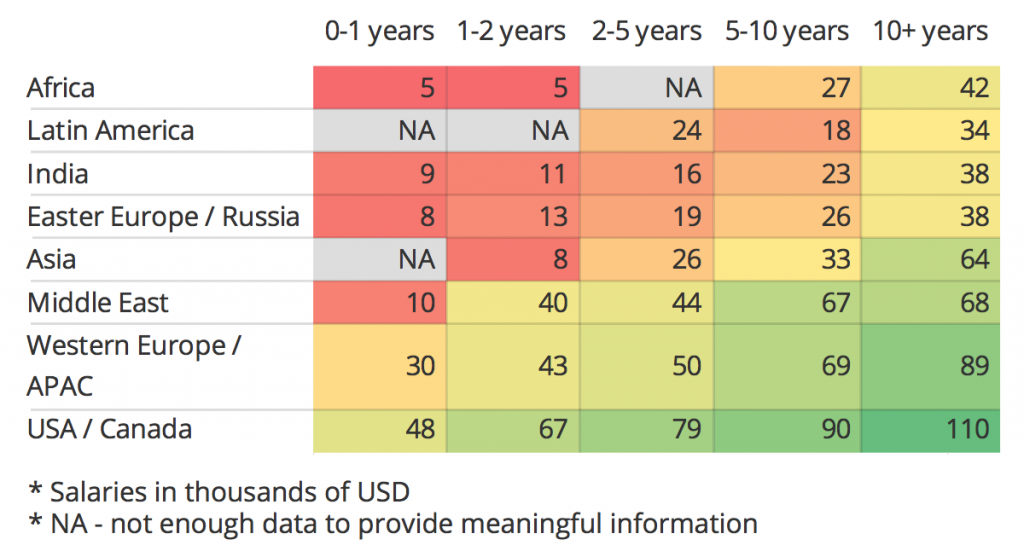State of Testing Survey 2016 Highlights
Each year, folks over at PractiTest and Tea Time with Testers conducts a survey of software testing professionals. The State of Testing Survey is the largest online survey of this kind. This year, over 1000 testing professionals participated in this survey from over 60 countries. The survey results are just out and here are some of its highlights.
Participant Demographics:
There were over 1000 respondents from all over the globe as shown in demographics below.
- Europe & Russia: 48%
- USA and Canada: 21%
- India: 11%
- Asia (without India): 7%
- Other: 13%
Testing Team Size:
As per trend observed from last few years, size of testing team in North America, Western Europe and Australia are getting smaller. Whereas team size keeps getting bigger in India, Asia, Eastern Europe and Middle East.
- 1-5 testers: 34%
- 6-15 testers: 25%
- 16-50 testers: 21%
- 51+ testers: 20%
Salary Information:
Below picture from State of Testing survey shows average salary testing professionals gets as per their experience levels in different regions.
Testing Approaches:
- Exploratory/Session based testing: 87%
- Scripted testing: 60%
- Bug hunts: 45%
- User simulations: 39%
- Pair testing: 25%
- Coordinated user testing: 24%
Desired Skills:
Participants voted for functional automation, web technologies and mobile technologies as very important skills to be a good tester. They also considered communication and customer facing skills as very important.
Tools Used:
Below is the breakdown of types of tools used by software testers.
- Bug Trackers: 82%
- Excel, Word, Mail: 66%
- Test Management Tools: 50%
- Project Management Tools: 23%
- Exploratory and note-taking tools: 20%
Testing Challenges:
First 3 extremely challenging tasks as per respondents are hiring, testing time frames and political/cultural issues. While they don’t find outsourcing/working with offshore, budget and testing tools as much challenging.
Other Key Takeaways:
- Testers are increasingly turning to social media for keeping up to date with their testing knowledge.
- Formal training is getting popular among testers in India and Western Europe. Same goes with certifications in Western Europe and Australia/NZ. Both of these are very unpopular in North America.
- 86% participants say they have automation in place in their organization. 11% say they don’t and 4% don’t know if their company has automation in place.
- 53% testers are not concerned about their job stability. 34% are somewhat concerned and 13% are very concerned about their job stability.
In case you want to read the full State of Testing survey report, you can download it from here.



